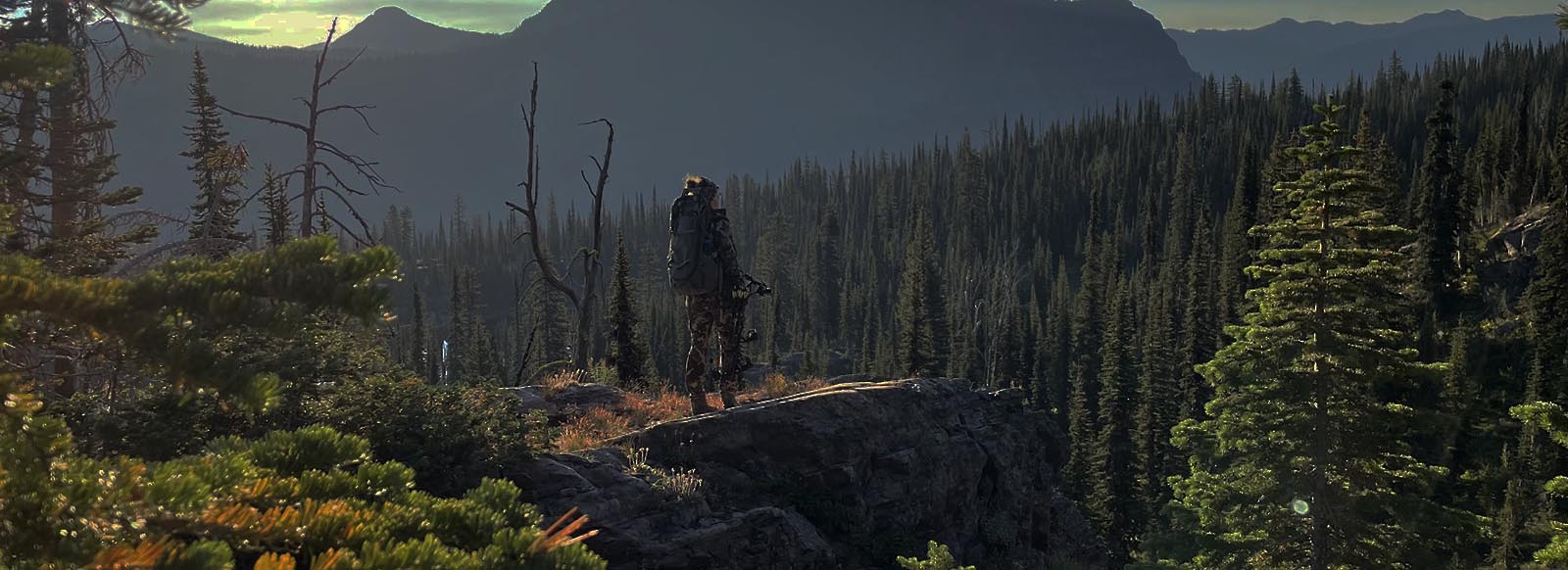Hunting in Montana’s Bitterroot and Sapphire ranges is not a casual walk through the woods. The terrain is steep, the days are long, and the conditions can change quickly. At Crazy Creek Outfitters, we guide hunters on fair chase elk, bear, and deer hunts across more than a million acres of public land—no horses, no ATVs in the backcountry, and no shortcuts. Every successful hunt starts with solid preparation, and that begins well before you arrive in Hamilton.
If you’re planning to hunt with us, especially for elk or black bear, there are a few things we recommend every hunter work on in the months leading up to their trip. This is not about running marathons or extreme workouts. It’s about conditioning your body to handle elevation, uneven ground, long days on your feet, and the physical effort required to make the most of your opportunity.
Montana hunts with Crazy Creek involve hiking steep ridges, crossing downed timber, navigating rocky drainages, and spending hours glassing in exposed areas. We often use 4x4s to access remote trailheads or ridgelines, but once we’re on foot, you can expect to cover multiple miles in a single day. Terrain varies, but elevation gains and descents are a given.
We recommend starting a basic conditioning program at least 2–3 months before your hunt. That doesn’t mean you need a gym membership. Walking local trails with a weighted pack is one of the most effective ways to simulate the kind of movement required out here. Start with 20–25 pounds and gradually increase as your legs and back adjust. If you live in a flat area, stairs or hills will help you build the climbing strength you’ll need.
Cardiovascular endurance is just as important as leg strength. Even fit hunters can find themselves winded at higher elevations. The Bitterroot range includes elevations from 4,000 to over 9,000 feet. Most of our hunting takes place in the 5,500–7,500 foot range. If you’re coming from sea level, expect your lungs to notice the difference. Hiking, trail running, or interval workouts that raise your heart rate are all good ways to prepare.
Footwear is one of the most overlooked parts of hunt prep. Your boots should be broken in well before you arrive. Blisters or foot pain can end a hunt early. We strongly recommend a waterproof, mountain-capable hunting boot with ankle support and a stiff sole for sidehilling. Even more important—wear the same socks and insoles you plan to use on the hunt during your training hikes. If something doesn’t feel right during training, it won’t feel better after five miles of climbing.
Strength is important, but stamina is what keeps you hunting effectively all week. Hunters who are in shape stay mentally sharp longer and are better able to capitalize on fast-changing situations. An elk may step into a window 400 yards above you, and if you’re too winded or too slow to get there in time, that opportunity is gone. Physical readiness helps create options—and that’s what western hunting is all about.
In addition to physical training, start dialing in your shooting under realistic conditions. Benchrest groups are not the same as field shooting. Practice shooting from kneeling, sitting, prone, and off sticks or packs. If you’re bowhunting, practice at uneven angles and draw while wearing your hunting layers. Montana’s terrain rarely gives you level shots.
We don’t guide with horses, and we don’t offer pack-in tent camps. Our hunters stay in local lodging near Hamilton and are picked up daily by their guide. That means you’ll have a clean, dry place to rest each night—but it also means you need to be ready to hit it hard every morning. There’s no midday nap on a mountainside in a spike camp. It’s go time when the sun’s up.
Nutrition and hydration are also worth addressing. If you’re training hard, get used to eating and drinking on the move. Mountain hunts are not the time to try out a new energy bar or skip breakfast. Small meals and constant hydration are key to avoiding fatigue and staying alert. During your hunt, your guide will carry snacks, but having your own preferences dialed in helps keep your energy up.
Finally, it’s important to prepare mentally. Hunting in the West is often about long stretches of silence, patience, and being ready when the moment finally comes. You might glass for hours without movement, then suddenly have to make a 250-yard shot under pressure. Staying mentally focused, adaptable, and positive is just as valuable as any physical training.
If you’re unsure how to prepare for a hunt with us, we’re happy to talk through it. Every hunter is different. Some arrive in mountain shape, while others need to start from the basics. What matters is that you show up ready to hunt hard, be coachable, and put in the effort when it counts.
At Crazy Creek Outfitters, we’re committed to delivering real, honest Montana hunts. We’ll guide the route, handle the field strategy, and work alongside you from start to finish. All we ask is that you show up prepared to match the effort and make the most of your time in some of the best big game country Montana has to offer.

